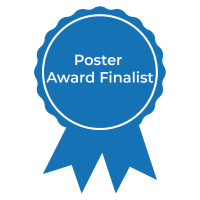Upper Limb Case & Anatomical Studies Posters
Poster: Upper Limb Case & Anatomical Studies Posters
58 - An Anatomical Study of At-risk Nerves During Carpal Tunnel Release: Considerations for the Prevention of Iatrogenic Nerve Injury
Sunday, March 24, 2024
5:00pm - 7:00pm US EDT
Location: Sheraton Hall
Poster Board Number: 58
There are separate poster presentation times for odd and even posters.
Odd poster #s – first hour
Even poster #s – second hour
Co-authors:
There are separate poster presentation times for odd and even posters.
Odd poster #s – first hour
Even poster #s – second hour
Co-authors:
Majid Alimohammadi, PhD, MSc, BSc - Associate Professor of Teaching, Department of Cellular and Physiological Sciences, University of British Columbia; Kenneth Liu, PhD, BSc - Lecturer, Department of Cellular and Physiological Sciences, University of British Columbia
.jpg)
Max J. A Abercrombie
Directed Studies Student
University of British Columbia
Vancouver, British Columbia, Canada
Presenting Author(s)
Abstract Body : Introduction and Objective: As a surgical treatment for carpal tunnel syndrome, carpal tunnel release (CTR) involves cutting the flexor retinaculum in the proximal palm to release compression on the median nerve. Despite being one of the most common procedures in hand surgery, variation in the location of the nerves supplying the palm leads to a high risk of iatrogenic damage. These at-risk nerves include the palmar cutaneous branch of the median nerve (PCBMN), the thenar motor branch (TMB), and the palmar cutaneous branch of the ulnar nerve (PCBUN). Recommendations have been made for the placement of a surgical incision that would minimize damage, yet no consensus exists, and injury persists in clinical practice. Additionally, studies infrequently consider the safety of all three of these nerves when making their recommendation. Future research is required to provide a comprehensive understanding of the course and variance of these nerves in conjunction with one another to minimize iatrogenic damage from CTR. This study aimed to collect a comprehensive set of measurements examining the PCBMN, PCBUN, and TMB in order to define a safe zone in the palm to recommend an incision placement for CTR.
Methods: 61 dissections (30 left, 31 right) were performed on formalin preserved cadavers. Consistent, detailed measurements examining the anatomy of the PCBMN, TMB, and PCBUN from their origin to their position in the palm were taken relative the scaphoid tubercle (ST), pisiform, or a longitudinal line from the radial side of the fourth digit (A line). TMB were further classified using Lanz classification.
Results: The PCBMN originated 75.7±16.3 mm to the ST and radially deviated off the median nerve 37.6±10.1 mm to the ST. At the level of the ST, the PCBMN was located 3.3±4.1 mm from the ST and 8.7±3.9 mm from the A line. The PCBUN originated in the proximal forearm 150.4±23.0 mm to the pisiform and ran with the ulnar artery. At the level of the pisiform, the PCBUN was 6.5±2.4 mm and 6.6±3.7mm from the pisiform and A line respectively. At its origin, the TMB was 25.0±7.4 mm and 7.9±3.3 mm from the ST and A line respectively. At the insertion to the thenar eminence, the TMB was 24.3±6.6 mm and 13.3±6.3 mm from the ST and A line respectively. The prevalence of TMB classifications was observed at 56% extraligamentous, 31% subligamentous, and 13% transligamentous.
Conclusion: We conclude that an area approximately 6 mm ulnar and 7 mm radial from the A line is the safe zone for CTR. With this knowledge, we recommend an incision placement in line with the radial aspect of the fourth digit.
Significance: This study has identified a safe zone in the palm and recommended an incision placement to aid surgeons performing carpal tunnel release. This knowledge may be utilized to reduce iatrogenic damage and increase the safety of CTR.
Methods: 61 dissections (30 left, 31 right) were performed on formalin preserved cadavers. Consistent, detailed measurements examining the anatomy of the PCBMN, TMB, and PCBUN from their origin to their position in the palm were taken relative the scaphoid tubercle (ST), pisiform, or a longitudinal line from the radial side of the fourth digit (A line). TMB were further classified using Lanz classification.
Results: The PCBMN originated 75.7±16.3 mm to the ST and radially deviated off the median nerve 37.6±10.1 mm to the ST. At the level of the ST, the PCBMN was located 3.3±4.1 mm from the ST and 8.7±3.9 mm from the A line. The PCBUN originated in the proximal forearm 150.4±23.0 mm to the pisiform and ran with the ulnar artery. At the level of the pisiform, the PCBUN was 6.5±2.4 mm and 6.6±3.7mm from the pisiform and A line respectively. At its origin, the TMB was 25.0±7.4 mm and 7.9±3.3 mm from the ST and A line respectively. At the insertion to the thenar eminence, the TMB was 24.3±6.6 mm and 13.3±6.3 mm from the ST and A line respectively. The prevalence of TMB classifications was observed at 56% extraligamentous, 31% subligamentous, and 13% transligamentous.
Conclusion: We conclude that an area approximately 6 mm ulnar and 7 mm radial from the A line is the safe zone for CTR. With this knowledge, we recommend an incision placement in line with the radial aspect of the fourth digit.
Significance: This study has identified a safe zone in the palm and recommended an incision placement to aid surgeons performing carpal tunnel release. This knowledge may be utilized to reduce iatrogenic damage and increase the safety of CTR.


